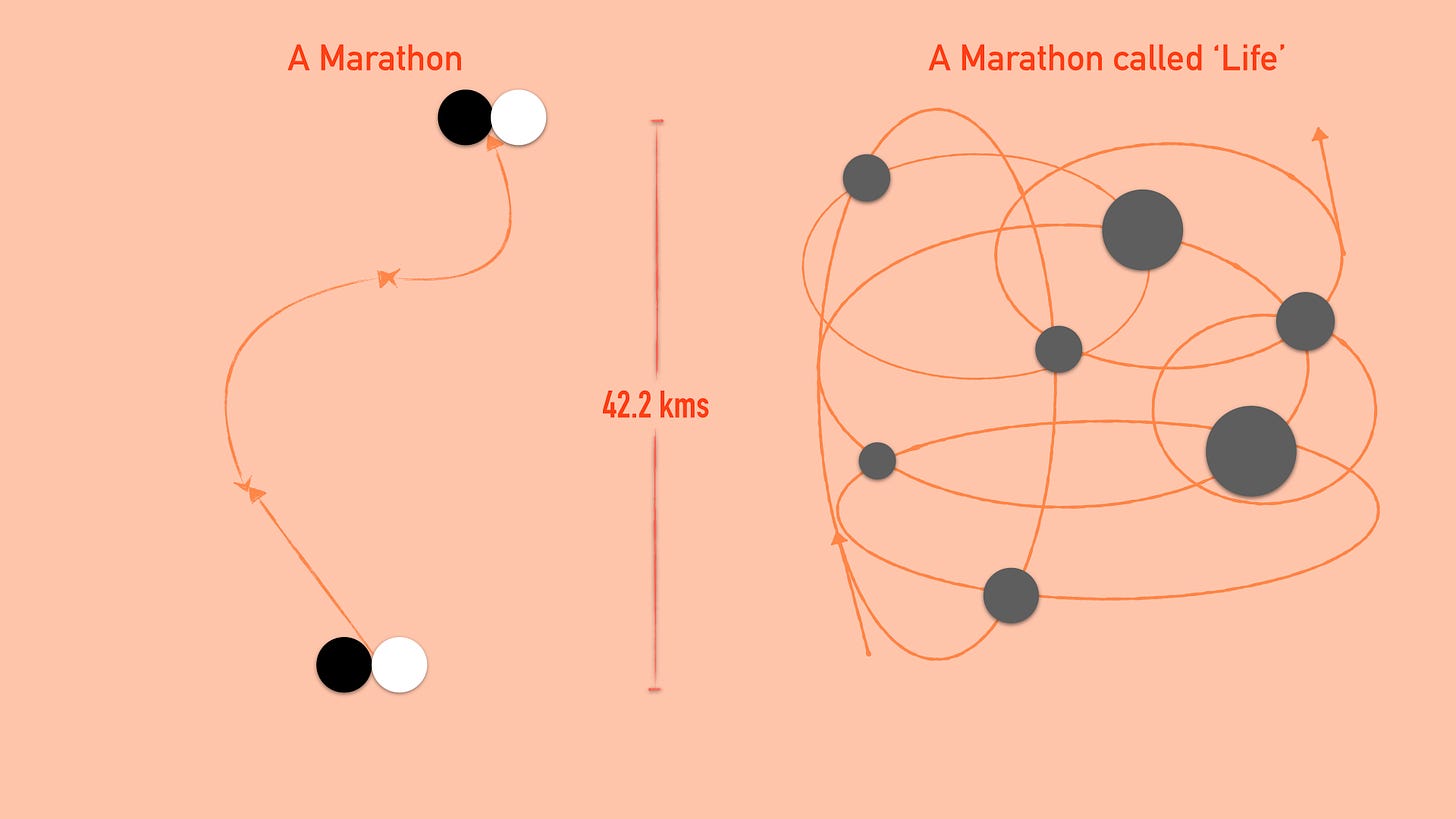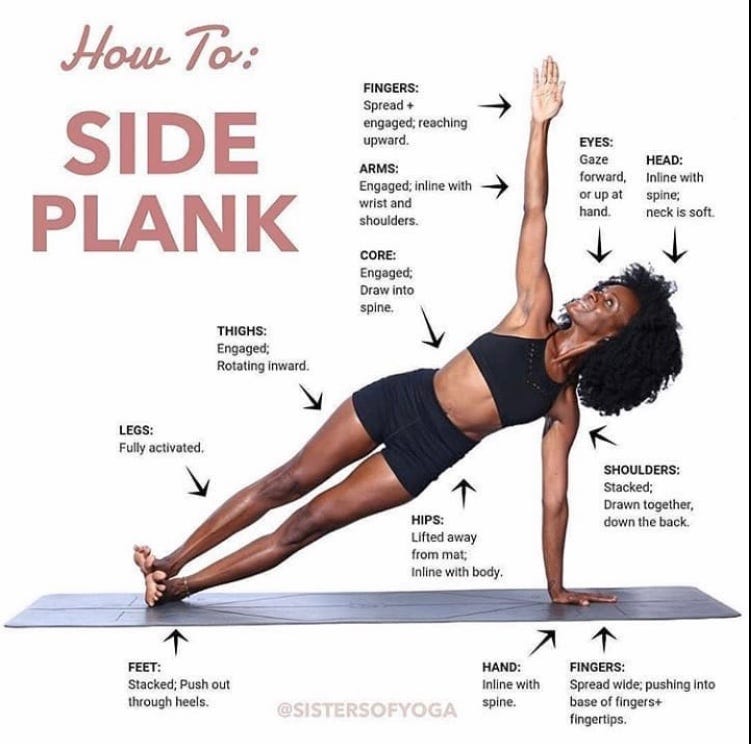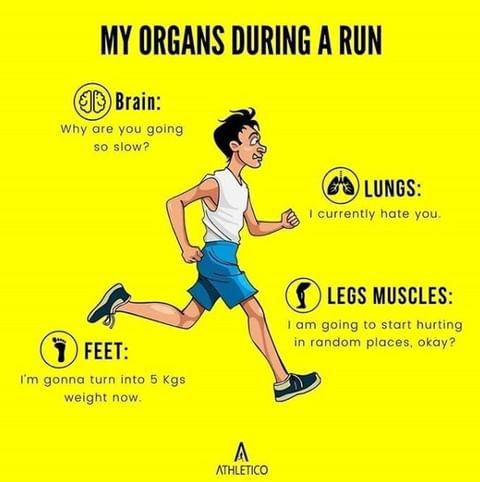Dear reader,
Welcome to Weekly Carb-Loading! Your Sunday morning dose of running and fitness inspiration.
Every run has a story, and we’re bringing these stories to you, along with runner profiles, home workouts, weekly challenges and a whole lot more!
We have one simple aim - a world where each of us sets aside time for exercise on a regular basis, and leads a healthier and longer life!
This week, we start with a history lesson.
The word ‘Marathon’ originates in Greece, from the legend of Pheidippides, a Greek soldier and messenger who ran a distance of approximately 40 kilometres, or 25 miles, from a battlefield near the city of Marathon, to Athens with word of their victory over the Persians, in 490 BC. On delivering his message, so the legend goes, Pheidippides collapsed and died.
To commemorate this feat of physical endurance, the Marathon was instituted as one of the original modern Olympic events in 1896, over a distance of 40 km (~25 miles)
The race was run over slightly varying but similarly long distances over the next few Olympic Games. At the 1908 London Olympics, it was extended to its current length of 42.195 km (26 miles, 385 yards) to accommodate the start of the race on the lawns of Windsor Castle, and the finish at White City stadium.
The extended distance was formally standardized in 1921, for all future marathons.
—
Outside of the Olympic Games, the Boston Marathon is the oldest annual Marathon in the world, and was first held on 19th April 1897.
Now, there are over 800 marathons held across the world every year. Six of the largest and most renowned, at Boston, Chicago, New York, London, Berlin and Tokyo, are together called the ‘World Marathon Majors’.
With distance running gaining in popularity among amateur runners in India over the last fifteen years, almost every Indian city now hosts an annual marathon. The largest of these is the Tata Mumbai Marathon (earlier known as the Standard Chartered Mumbai Marathon) held on the third Sunday of January. It attracted 55,000 participants in its 2020 edition.
All this history got us thinking - Is the journey of life much like a Marathon?
At the outset, a marathon seems fairly black and white. Start to finish with the journey in between. But it isn’t. For those of us who haven’t been a part of one yet, it isn’t just a run across the 42 km distance mentioned above, but starts much beforehand, up to a year in advance.
The preparation goes unseen. Countless mornings spent out on the road, before the crack of dawn. A healthy diet and disciplined weekly routine for several months preceding the race.
Race-day itself attracts thousands of runners. A few elite professionals gunning for the prize money and the podium, but a majority of amateurs, aiming only to conquer the distance, or improve their personal best. Marathons draw large crowds in support, the atmosphere full of energy and excitement.
This part of a marathon, on display around the city every year, has a discernible start and finish line. A route, a goal, and most definitely, an endgame.
—
Life, follows a similar pattern.
It is a journey we all start the day we are born. As kids, it seems to us fairly black and white. Start to finish with the journey in between. But it isn’t.
Its route is undefined, different for every individual, although sometimes guided along well-worn pathways by family and friends.
A result of several big and small decisions along the way, life is free to shape with our own hands through the choices we make. What to study, where to live and work, whether to start a business or climb the corporate ladder.
Like a marathon, life comes with its tough climbs and bad days. Some part of the route and elevation plan are known beforehand.
Life, like a marathon, is something we can practice, plan and prepare for, but will always throw up unexpected hiccups and potholes when we least expect them. Surprises around turns and corners, to which we react as best we can, adjust to and overcome.
Just like a marathon, we choose our own race strategy.
We can either run hard, push ourselves, concentrate only on the finish and nothing else. Or we can sit back, relax and enjoy the journey as it progresses, the wonders of nature, trees in the distance, wind on our back. Stop to take a photo or two with our near and dear ones out on the course, cheering us on, at the expense of a few lost seconds.
Just like a marathon, life is a test of character.
There are moments of doubt, when fatigue overcomes the body, when we feel we’re too tired to go on, when anxiety plagues our mind. When we have to dig deep within ourselves to find motivation, to put one foot ahead of the other, and keep moving.
There is help and support, for those who need it. From passing runners who shout out and pull us along. From the ever-energetic crowd, offering high-fives and food along the course, from family and friends looking out for us every step of the way.
Just like a marathon, life is sometimes a lonely sport.
We may be surrounded by thousands of others, some even running an identical route with a similar finish in mind, but for each runner, a marathon, and what we choose to make of it, is an extremely individual pursuit.
Eventually, as we look back on life, on each day that has passed, as we reflect on a marathon once its over, we realize its much the same thing.
Its as simple as putting our shoes on and heading out for a run.

Beginner Workouts - Cardio Starter
If you are new to workouts, and wondering how to get started, we have you covered!
This section gets you started on the road to becoming a healthier and fitter version of yourself!
Over the last few weeks, we covered Warming Up, Stretching and Going for a Walk (If you haven’t kept up, worry not! Just head to our Archives to catch up)
This week - we start with Cardio!
Cardiovascular Exercises (or ‘Cardio’, as they are popularly known) are those which increase your heart rate and breathing. Plain and simple.
If you’re going for a brisk walk everyday, you’re already getting your dose of cardio! Hiking, running, cycling, swimming, zumba - all count as cardio, as long as you’re challenging your heart and lungs to function at a ‘higher-than-leisurely’ pace.
These exercises usually engage major muscle groups in your legs, arms and hips, deliver large amounts of oxygen to these parts of your body, and help you use the oxygen more efficiently.
Regular cardio improves stamina and endurance i.e. you don’t tire out as quickly as you did (a quick check is how many flights of stairs you can climb before being out of breath)
Cardio improves metabolism, burns calories and strengthens your heart and lungs. Over the long term, it can help control blood pressure and diabetes too.
This week, once we’re done with our daily warm-up and stretching, let’s add 10 minutes of a Low-impact Home Cardio workout to our routine, via Team Body Project on Youtube.
Tip: If you have an HR strap or a Smart watch which measures your heartbeat, you can record your activity, track your HR and how many calories you burnt!
General Instructions: Please wear sturdy shoes and loose, comfortable clothing. Hydrate well before and after the cardio workout. If you experience unusual pain during any exercise, stop immediately and seek medical advise from your doctor.
Note on Covid19: The lock-down may be scaled down, but the virus has not yet subsided. We at Team WCL recommend avoiding crowded spaces, group activities and practicing social distancing while outside. Please wear a mask. In case your community or neighborhood is in a quarantine zone, please stay indoors.
New Challenge - Elevated Side Plank
Our weekly fitness challenges are quite popular, why not ride the wave for another week, and another challenge!
This week we have - ‘The Elevated Side Plank’!
Record it, and screenshot a picture of your timings in the comments below! Of course, we’re doing it as well.
But wait, what’s an Elevated Side Plank and how do I do it?
The Elevated Side Plank is an exercise which targets your oblique abdominal muscles, and helps you build a strong core. The result - better balance and stability in various sports and in running.
Similar to our previous challenges - it requires no equipment! Here’s a helpful picture, via @sistersofyoga on Instagram

News From Around The World
Ultra marathoner Alyssa Clark broke the record earlier this month, for the most number of consecutive days running a Marathon distance (26.2 miles)!
She and her husband were stranded in Italy when the pandemic struck, and she achieved this feat despite initially being under lock-down (the first 30 days were Treadmill marathons). She maintained her routine outdoors when the lock-down was lifted, and also travelling back home to the United States of America.
The earlier record was 60 days, and she’s still going strong, aiming for 100 days of running! As of Friday, she was up to 87!
What We’re Listening To
Workout ‘Ear-worm’ of the week: Roses (ImanbekRemix) by Saint JHN
Fun Feature of the Week
:D
Gmail sometimes sends us to your ‘Promotions’ tab. Here are a few ways to prevent this from happening
Open any email from Weekly Carb-Loading in your Web-browser
At the top of the email, under ‘More’ (three vertical dots) select ‘Filter Messages Like These’ -> ‘Create A Filter’
Select the second-from-last box ‘Categorize As..’ -> ‘Primary’, as well as the last box ‘Apply the filter to all matching conversations’
Click ‘Create’, and you’re done! All future emails will automatically be redirected to your Primary inbox
You may also choose to
Mark emails from ‘Weekly Carb-Loading Newsletter’ as ‘Important’
Add <weeklycarbloading@substack.com> to your Contact List
Well, that’s a wrap from us this week!
If you liked this post, share it with a friend on Whatsapp, and subscribe to get this newsletter in your inbox every Sunday!
We’re also live on Twitter with small servings of carbs throughout the week!
To read any of our previous posts, you can head to the Archive.
Until next week, stay healthy, stay fit, and stay safe!
- Team WCL <3





1:17 side plank 😁